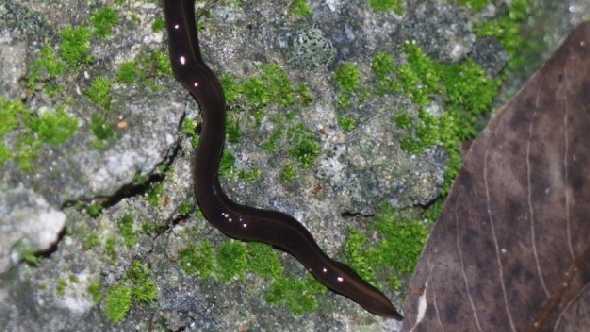South Florida’s Newest Pest Has Significant Ooze Factor
If you’ve ever wondered where the creators of the “Alien” movies got their inspiration, perhaps it was from something similar to what has recently invaded South Dade County near Miami.

Photo by Makiri Sei
According to recent reports, researchers have confirmed the presence of the New Guinea flatworm (Platydemus manokwari) in several locations around Miami metro area to Coral Gables. The discovery is the first time the Pacific-island-based pest has been found in the U.S.
The tiny worm, which feasts on all kinds of snails, slugs, and subterranean dwellers, features a mouth located on its belly that projects outward (when needed) to excrete an acidic slime that breaks down a prey’s flesh for optimal digestive purposes.
The Invasive Species Specialist Group lists the New Guinea flatworm as one of the “World’s Worst Invasive Alien Species.”
The Global Invasion Species Database breaks out some of the pest’s specs as follows:
Identification
It has a uniform exterior appearance.The adult length is 40 mm to 65 mm long, 4 mm to 7 mm wide. The head end is more pointed than tail end.
The flattened cross section has a thickness less than 2 mm. The color of the dorsal surface is very dark brown, almost black, with a thin medial pale line. The ventral surface is pale gray.
Habitat
P. manokwari can be found in agricultural areas, coastal areas, natural forests, planted forests, riparian zones, ruderal/disturbed, scrub/shrublands, urban areas, and wetlands.
Spread
P. manokwari is hermaphroditic and can reproduce (without any help) at a torrid pace. Of particular interest to growers: It can readily be transported and dispersed via infested garden soil, plants, and plant parts. In addition, translocation of equipment also can help spread the pest.
Management Methods
Hot water treatment to destroy pests has been used during the quarantine of ornamental plants in previous tests conducted overseas.
The nocturnal predator poses a major threat to native snails and other mollusks. This might not be such a bad thing in the case of South Florida as it has used exhaustive efforts during the last four years to eradicate another dangerous invasive, the giant African land snail (GALS). Apparently, the New Guinea flatworm has no problem taking on and taking out those prolific pests.
Of course, exchanging one invasive pest for another is not an ideal situation. Similar to the GALS, the New Guinea flatworm is known to carry rat lungworm, a parasite that can cause a form of meningitis in humans and animals.
The confirmation of this new invasive threat comes at a particularly bad time as Florida Gov. Rick Scott recently vetoed funding for the UF/IFAS Invasive Pest Quarantine Lab in Ft. Pierce.









